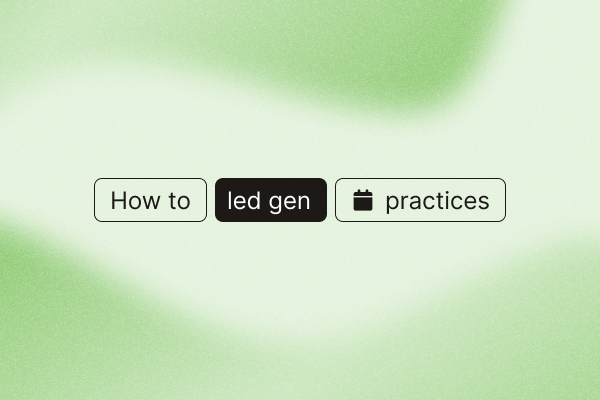The goal of B2B lead generation is to attract potential customers and qualify them as sales leads. It’s the foundation of a strong sales pipeline.
In this guide, we’ll explore actionable best practices to optimize your lead generation strategy for 2024.
Whether you’re focusing on intent data, automation, or social selling, you’ll find the information you need to help you generate more leads and drive business growth.
TL;DR
- Lead generation fuels customer acquisition and keeps your sales pipeline active.
- Main benefits include identifying ideal customers, boosting brand awareness, increasing conversion rates, improving sales alignment, and driving revenue growth.
- Top 10 B2B lead generation best practices are:
- Focus your lead generation efforts on intent data because it helps identify prospects already interested in solutions like yours.
- Enrich your leads with accurate data, like LinkedIn activity, to improve engagement and make outreach more relevant to your target audience.
- Use AI to detect quality leads, rank prospects based on key details like job titles or industries, and prioritize outreach effectively.
- Invest in social selling to attract the right prospects by building relationships with potential clients through platforms like LinkedIn.
- Prioritize warm outbound over cold outbound to engage leads who already know your brand and are more likely to respond.
- Use AI to generate personalized messages that match each lead’s interests and communication style, boosting response rates and saving time.
- Automate outreach campaigns with tools like LinkedIn Outreach to scale efforts and keep your pipeline active.
- Keep sales and marketing aligned with real-time CRM updates to ensure teams work with accurate, up-to-date data.
- Scrape sales leads responsibly by using compliant tools to maintain ethical and effective prospecting, and avoid account restrictions.
- Select a B2B lead generation tool that aligns with your business goals, focusing on data quality, integration, and scalability. PhantomBuster is a great option—it lets you automate lead scraping, scale outreach, and keep your CRM synced effortlessly.
Why is B2B lead generation important for sales teams?
Lead generation is essential for growing your customer base and maintaining a steady sales pipeline. It supports both marketing and sales teams in capturing and nurturing leads, driving business growth.
It’s also essential to understand the distinction between Marketing Qualified Leads (MQLs) and Sales Qualified Leads (SQLs).
MQLs are leads that have engaged with marketing content but aren’t yet ready for sales, while SQLs have shown clear buying intent and are ready for outreach.
Here are the key advantages of a solid lead-generation strategy:
- Identify ideal customers: Target the right audience to increase conversions.
- Build brand awareness: Keep your brand visible to potential buyers.
- Improve conversion rates: Focus on high-potential leads for better sales results.
- Gain customer insights: Use data to refine marketing and sales strategies.
- Optimize your sales process: Streamline sales-qualified lead nurturing and sales alignment.
- Expand addressable market: Tap into new markets and customer bases.
- Enhance your content marketing strategy: Create valuable content that attracts more leads and improves your overall search engine optimization.
- Increase revenue: Convert leads efficiently for business growth.
10 B2B lead generation best practices to enhance your sales pipeline
Traditional methods like cold calling or buying lead lists are outdated because they lack the personalization needed to build meaningful connections with potential customers.
Today, successful B2B companies prioritize relationship-building, automation, and precise targeting to turn prospects into paying customers.
Here are the top 10 B2B lead generation best practices to enhance your sales process:
1. Focus your lead generation efforts on intent data
Intent data helps you target prospects who are already showing interest in similar solutions.
There are three main types to focus on:
- First-party intent data: Collected directly from your site, such as which pages they visit or content they download.
- Third-party intent data: Gathered from platforms like LinkedIn, showing what users engage with.
- Bidstream data: Derived from ads being viewed across different websites.
How to implement
One practical way to get intent data is through the LinkedIn Company Post Commenter and Liker Scraper Phantom. This tool helps you find potential leads by identifying people who engage with competitors or other industry-related content on LinkedIn.
It lets you scrape likes and comments from posts relevant to your field, such as HubSpot’s posts on LinkedIn, to build a list of relevant leads already showing interest in similar topics.
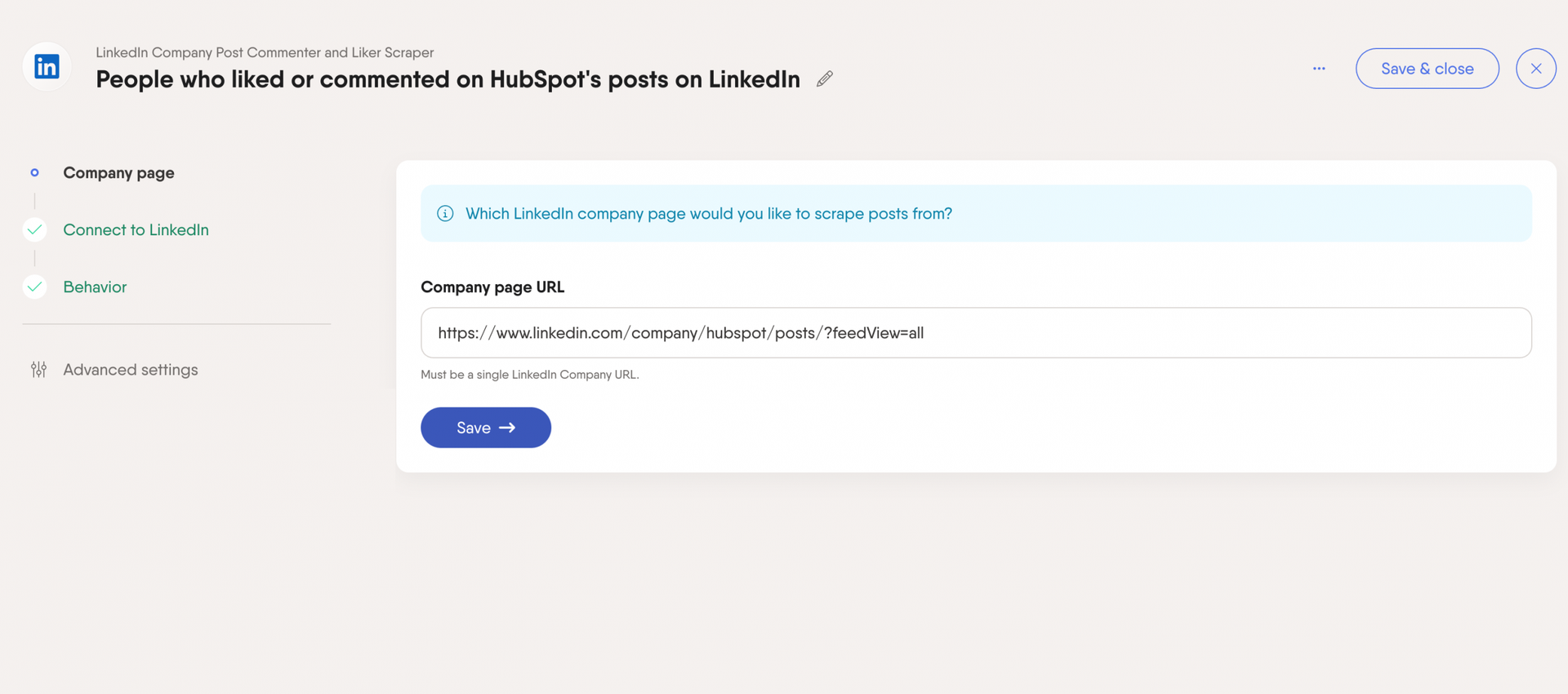
This tool lets you build targeted prospect lists based on genuine engagement, helping you develop a better warm outbound strategy.
Instead of doing cold outreach, you can connect with leads who have interacted with content that’s similar to your offering.
2. Enrich your leads with accurate information
To successfully engage leads, you need accurate information, like the right emails to avoid rebounding.
Scraping additional data, such as LinkedIn activities or social media interactions, can even provide deeper insights into your prospects.
How to implement
Use the LinkedIn Activity Extractor to collect data on a lead’s recent LinkedIn activity. This tool extracts posts and other activity from specific profiles, giving you real-time insights into their interests.
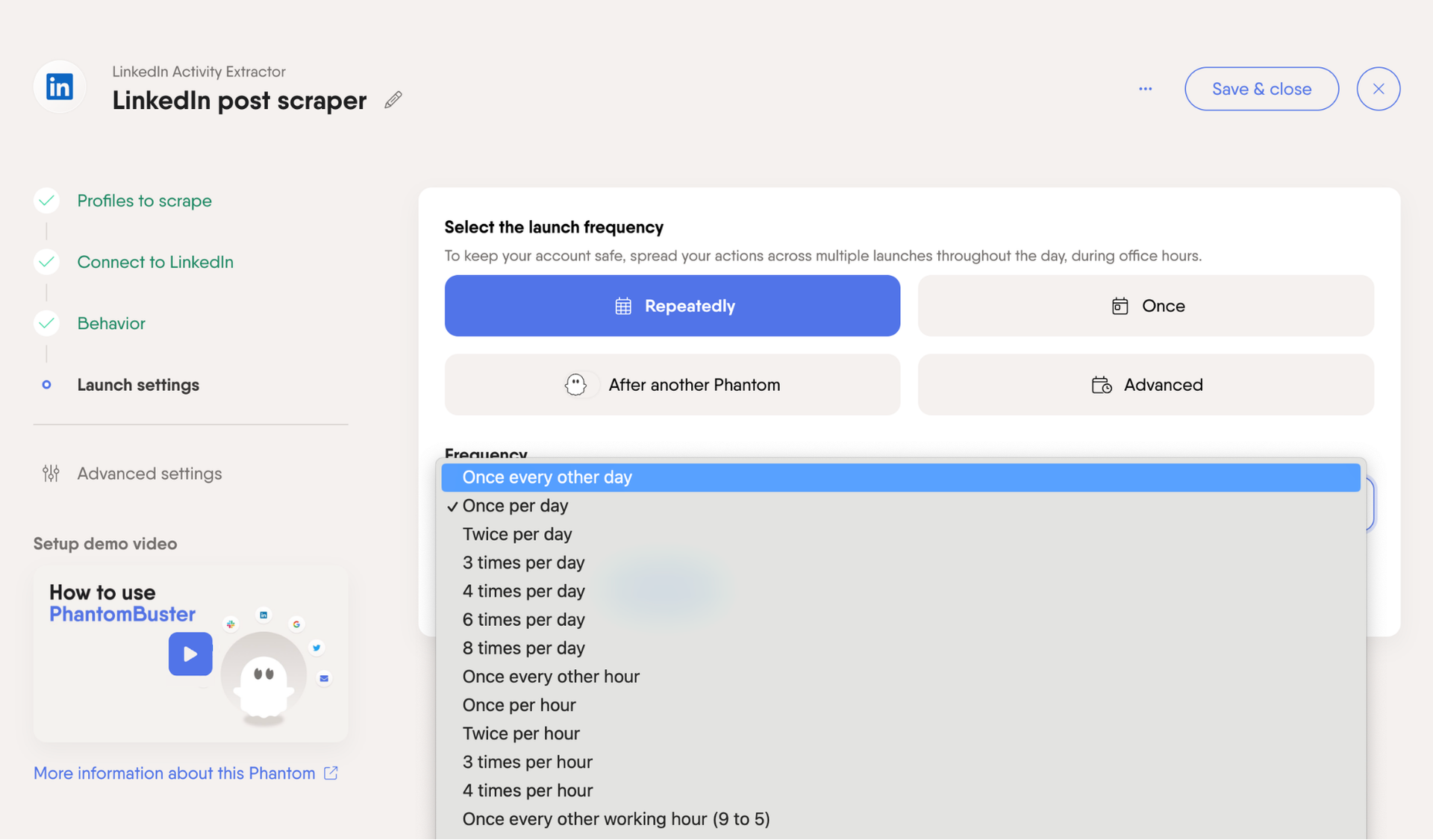
It helps you personalize follow-ups and sync enriched data into your CRM for a more targeted approach.
For example, if a prospect posts on social media platforms, you can follow up with related insights or solutions, enhancing engagement.
3. Use AI to detect high-quality leads
AI-driven tools can take your lead qualification to the next level by analyzing key data points.
They look at important details like job titles, industries, and how people engage with content, so you can zero in on the best leads.
How to implement
With the AI LinkedIn Profile Enricher, you can automatically score leads based on predefined criteria.
It lets you customize prompts to create lead scores based on attributes like job title relevance or company size. It then gives you a ranked list of leads, so you know exactly who to prioritize for outreach.
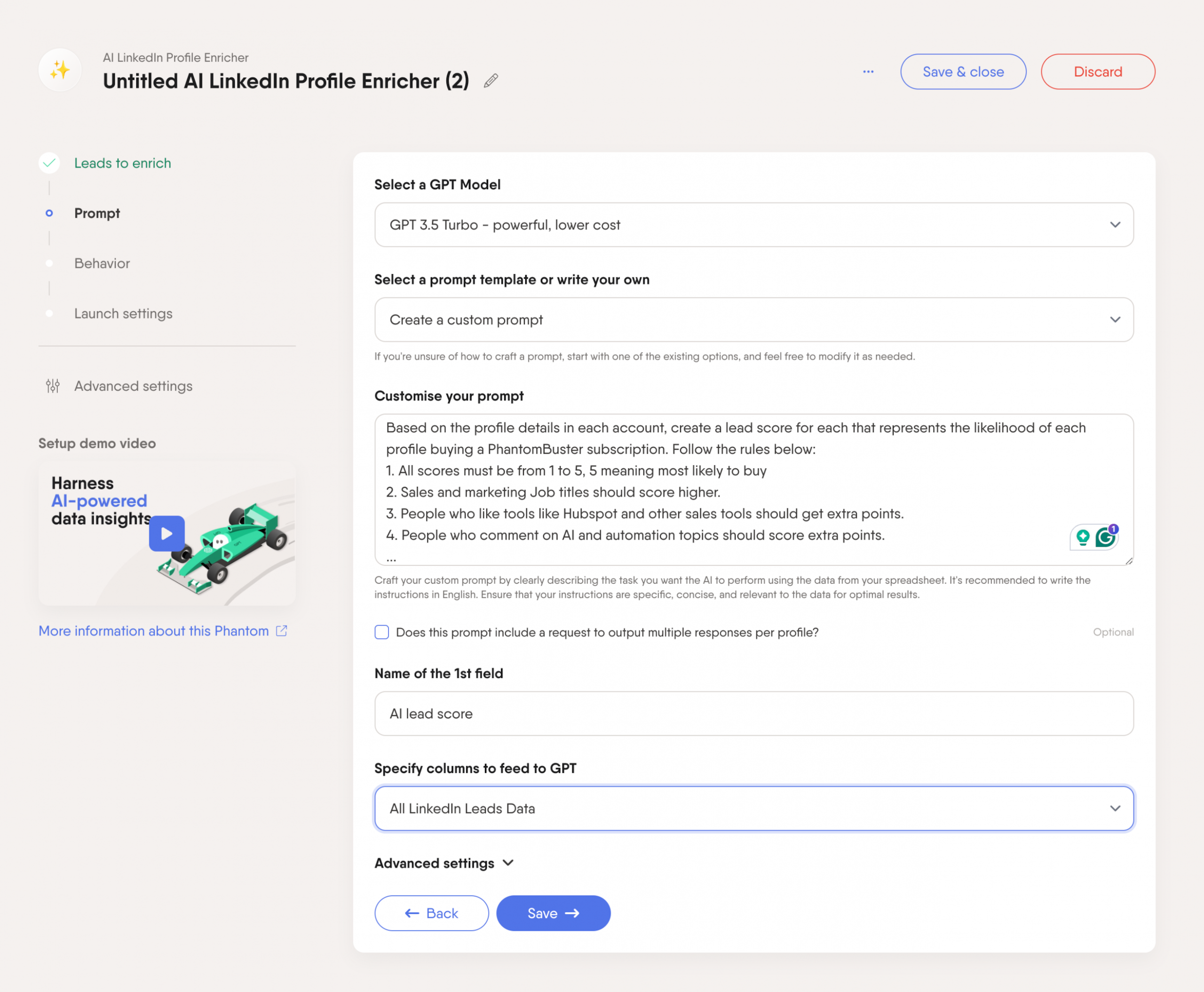
For example, you can instruct the AI to prioritize leads working in certain industries or to score higher those who have interacted with content related to your product.
This way, your sales team knows which leads to focus on first.
4. Invest in social selling to attract the right prospects
Social selling is all about building authentic relationships with potential clients through social media platforms.
Rather than cold calling or emailing, you engage with prospects on social platforms like LinkedIn, where they’re already active and receptive.
The main advantage is that this approach creates more personal, trust-based connections, which are key in the B2B space.
How to implement
Use social selling tools, like the LinkedIn Search to Lead Connection Phantom.
It helps you build a network of relevant contacts by extracting profiles based on specific criteria like industry, job title, or company, and sending personalized connection requests.
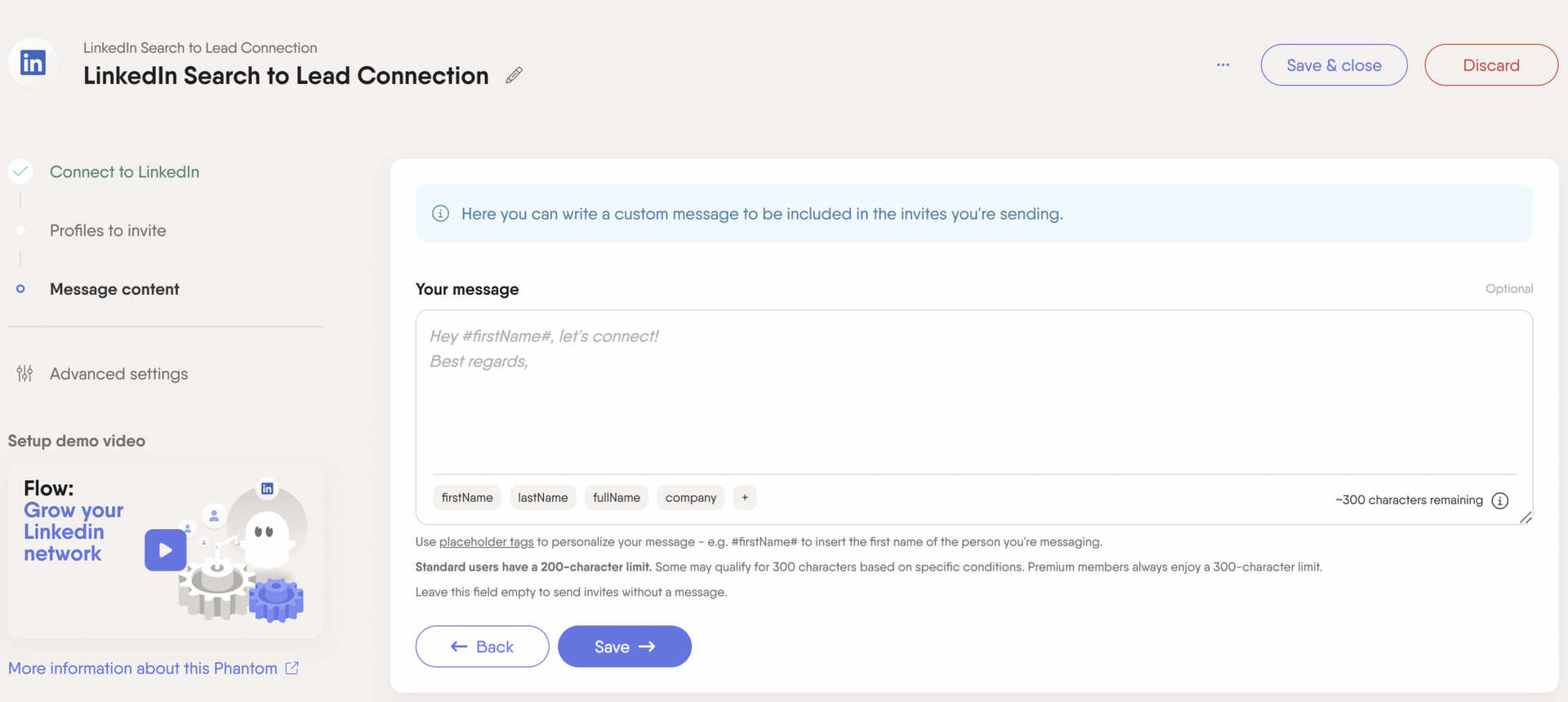
After connecting, you can warm up those leads by inviting them to relevant events with the LinkedIn Event Inviter Phantom, for example.
With it, you can automatically send invitations and track responses.
5. Prioritize warm outbound vs. cold outbound in your lead generation strategies
Warm outbound is like reconnecting with an old acquaintance instead of cold-calling a stranger.
Your prospects already know you, so they’re more likely to listen and respond.
Plus, you’ve got a head start on building trust. That’s gold in B2B sales.
How to implement
To make warm outbound work:
- Start with your network. Who do you already know that fits your ideal customer profile?
- Leverage your content. Did someone download your whitepaper? Follow up!
- Use social proof. “I saw you liked our post about X. Thought you might be interested in Y.”
- Personalize your approach. Show you’ve done your homework.
Here’s a pro tip: Find people who’ve already engaged with your company on LinkedIn. Use tools to export lists of folks who liked or commented on your posts.
These are warm leads waiting to happen. Just remember to use this data responsibly and respect privacy guidelines.
6. Use AI to generate personalized messages for qualified leads
AI tools transform how you reach out to leads. They craft messages that speak directly to each person’s interests and style.
This means more responses and less time spent writing.
How to implement
Start with PhantomBuster’s AI LinkedIn Profile Enricher to get the correct tone of voice to use when reaching out to each of your leads.
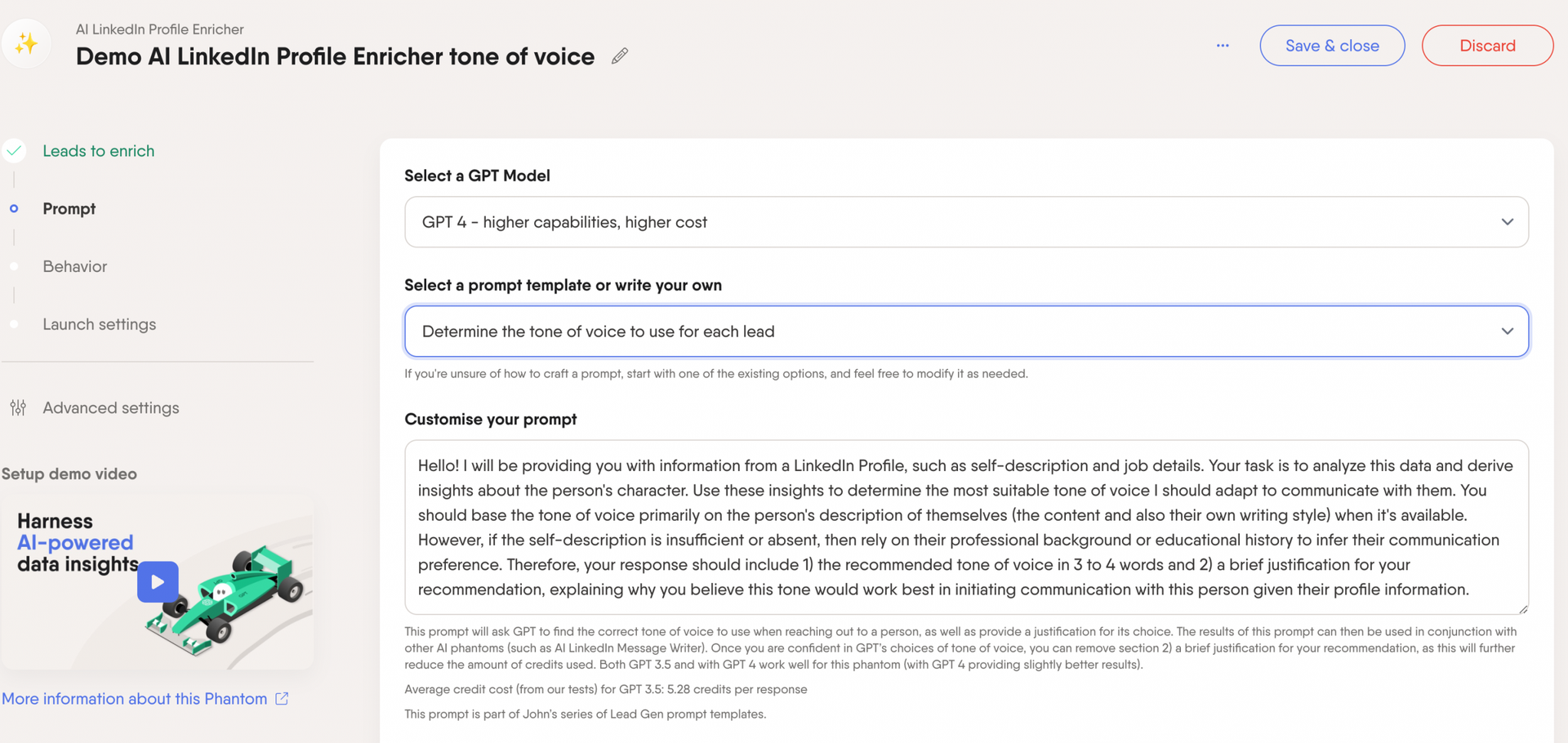
Then, take this info and feed it to an AI writing tool, such as the AI LinkedIn Message Writer.
Tell it to write messages that match each lead’s vibe and touch on what matters to them.
Don’t just hit send, though. Look over what the AI writes. Make sure it sounds right and fits the person. Add your own twist to keep it real.
Keep an eye on which messages get responses and adjust as you go.
7. Automate your outreach lead generation campaigns
Automation tools take the grunt work out of lead generation, freeing you up to focus on strategy and closing deals.
They help you reach more potential customers without burning out.
How to implement
PhantomBuster’s LinkedIn Outreach lets you send your carefully crafted messages to your target audience on LinkedIn, keeping your pipeline full without you lifting a finger.
This LinkedIn Outreach flow lets you:
- Send connection requests based on your lead profile list.
- Include a personalized introduction message with each request.
- Automate up to three follow-up messages once a connection request is accepted.
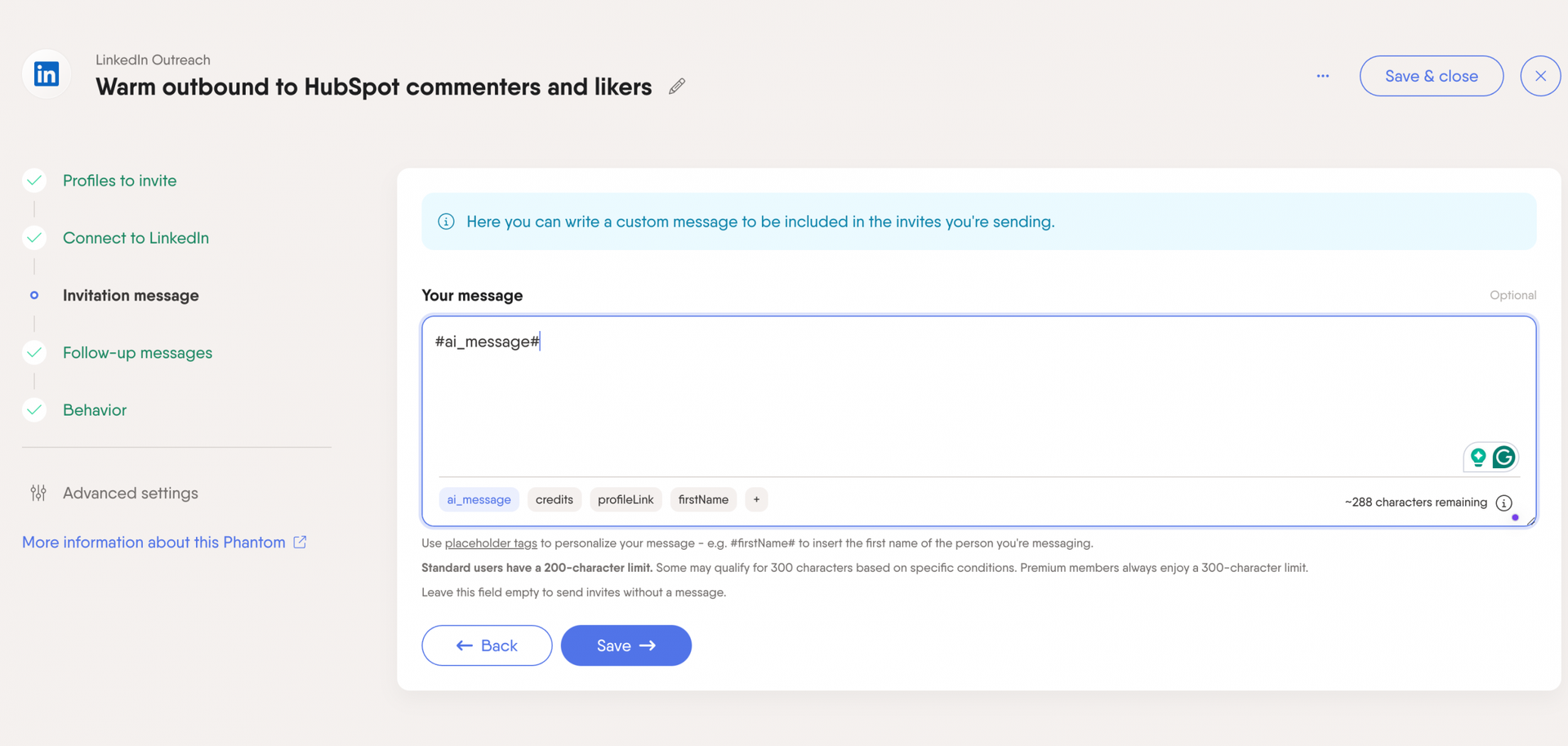
You set the rules—who to contact, when to reach out, and what to say. The tool does the rest, even following up if someone doesn’t respond.
8. Keep sales and marketing teams aligned with an up-to-date CRM
Syncing your CRM is the key to smooth sales and marketing collaboration. It makes sure everyone has the same information about leads and existing customers.
Your sales cycle gets faster and your targeting gets better.
How to implement
You’ve got options here:
- Manual updates: It works for small teams, but they’re time-consuming and error-prone.
- Automated data sync: Most CRMs offer this feature. It’s more reliable than manual updates, but it can be pricey.
- PhantomBuster’s HubSpot Contact Sender: It pushes contact updates directly to your HubSpot CRM. You map out the fields you want to capture—job titles, emails, phone numbers, LinkedIn profile URLs—and the tool does the rest.

It’s like having a tireless data entry assistant who never makes typos.
This automated approach keeps your CRM fresh without eating up your team’s time.
Your sales reps always have the latest info when they reach out, and your marketers can segment their lists with confidence.
9. Scrape sales qualified leads and automate responsibly
Lead scraping can boost your prospecting efforts, but it’s an instrument you need to use carefully.
Done right, it fills your pipeline with targeted leads faster than manual research ever could.
Done wrong, you risk account restrictions or damaging your brand’s reputation.
How to implement
Ethical automation is key here. Tools like PhantomBuster are designed to work within LinkedIn’s guidelines, helping you avoid restrictions while still leveraging the platform’s vast professional network.
These tools mimic human behavior patterns, spacing out actions and respecting daily limits.
Here are some good practices to automate responsibly:
- Set up your scraping parameters to target relevant leads.
- Warm up your account before scaling automated action.
- Focus on specific industries, job titles, or engagement with relevant content.
- Always clean and verify your scraped data before use.
- Remove duplicates, check for outdated information.
10. Use a B2B lead generation tool to generate leads that fit your goals
The right lead generation tool can transform your lead generation process.
It automates tedious tasks, uncovers hidden opportunities, and helps you focus on leads that matter most to your business.
How to implement
When choosing a B2B lead generation tool, consider these key factors:
- Data quality and freshness: Up-to-date info keeps you targeting the right prospects.
- Integration with your existing tech stack: Works seamlessly with your CRM and other tools.
- Customizable search criteria: Tailor lead searches to fit your exact needs.
- Compliance with data protection regulations: Ensure it follows GDPR or other regulations.
- Scalability to match your growth: Grows with your business.
- Reporting and analytics capabilities: Clear insights to track progress and adjust.
- Ease of use: Simple, intuitive, no steep learning curve.
- Customer support and training resources: Reliable customer service for smooth sailing.
- Pricing structure and ROI potential: Make sure the pricing fits your budget and delivers value.
Pick a tool that aligns with your specific needs and goals.
The best solution varies based on your industry, target market, and team size. Test drive a few options before committing to ensure you find the right fit for your workflow.
Best B2B lead generation tools for your lead generation strategy
PhantomBuster
PhantomBuster is a powerful lead generation tool that automates the process of generating leads and scraping data from platforms like LinkedIn and Sales Navigator.
It helps you find, enrich, and connect with leads automatically.
With pre-built automations (Phantoms), sales teams can generate leads and engage with them without manual work.
Best for
- Scraping LinkedIn and Sales Navigator profiles to build intent-based lead lists.
- Automating follow-up messages and outreach with AI-personalized messages.
- Syncing lead data with bi-directional HubSpot integration for easy management.
- Enriching leads with job titles, emails, and activity insights.
- Automating multi-step workflows to streamline lead nurturing.
- Ensuring LinkedIn account safety by adjusting automation settings to stay within LinkedIn limits.
G2 review: 4.2/5
A must use tool
I use it almost on a daily basis to export my data from LinkedIn, Sales Navigator, and other platforms. It is one of the many features it offers. Very easy to use and a great feature.
I am pretty much happy with the features I use and I don’t think there is anything that I hate in PhantomBuster at the moment.
Vikas T., Senior Business Development Executive, Mid-Market Staffing Firm
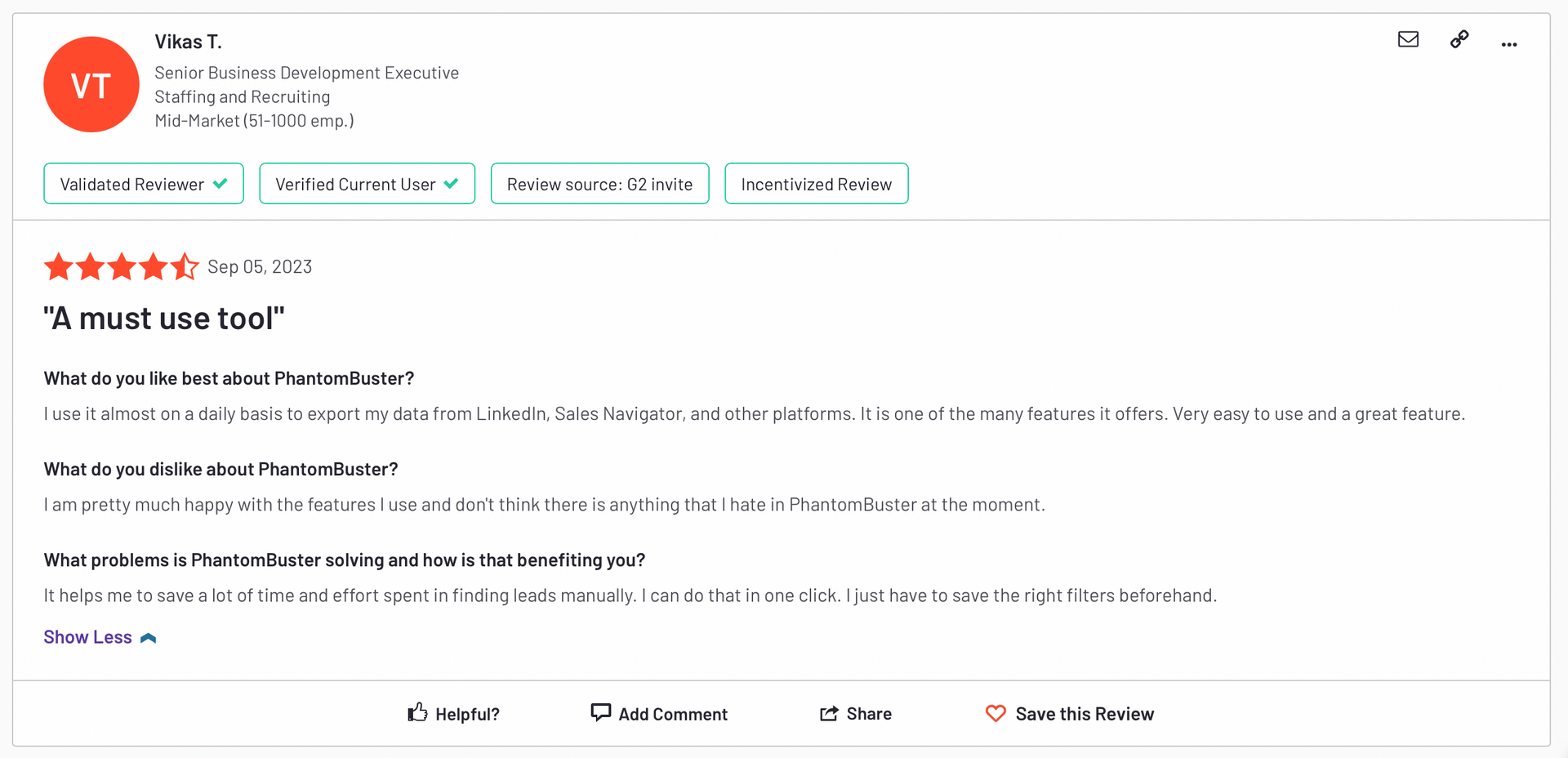
Pricing
PhantomBuster offers a 14-day free trial. The Starter paid plan begins at $56 per month and includes 20 hours execution time per month, 10k AI credits, 5 Phantom slots, 500 email credits, and unlimited data exporting.
LinkedIn Sales Navigator
LinkedIn Sales Navigator is a powerful tool designed for B2B sales teams.
It provides advanced search capabilities and allows you to find high-quality leads by using detailed filters and insights directly from LinkedIn profiles.
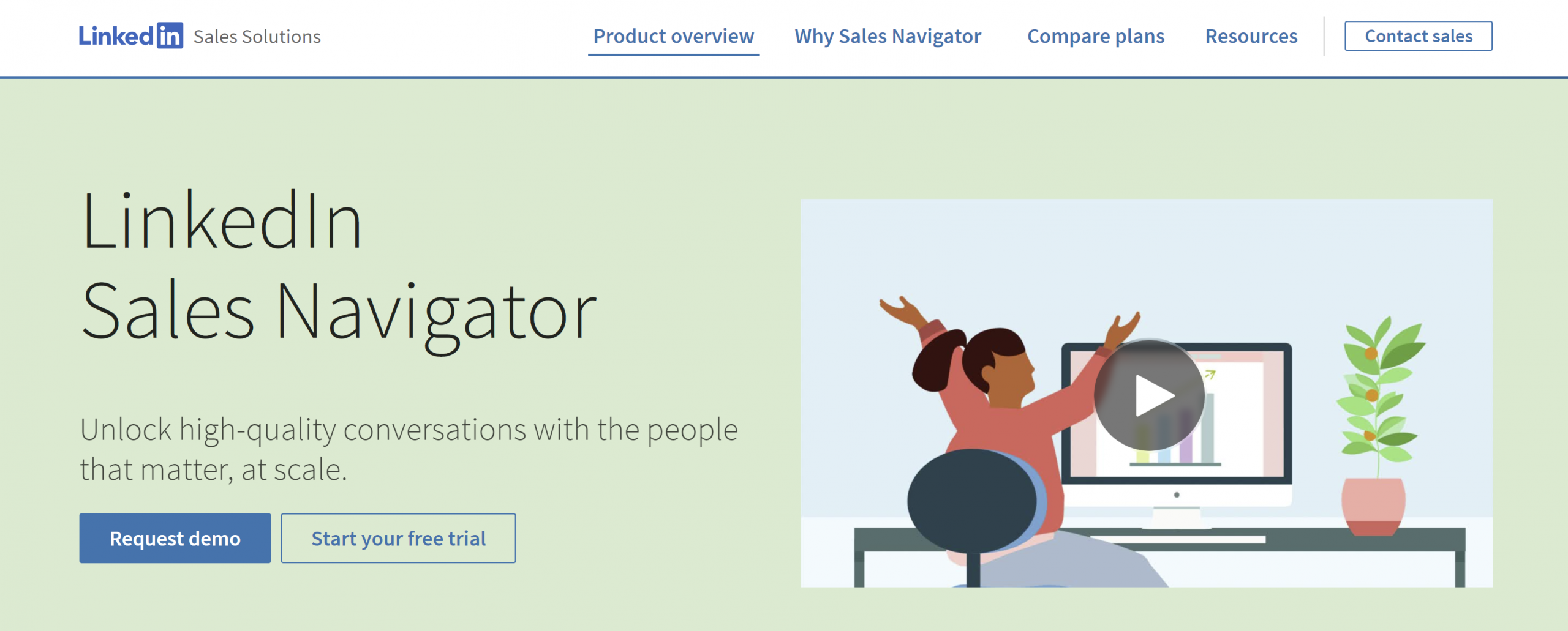
Best for
- Unlimited searches to find ideal prospects.
- Advanced search filters to target sales leads based on criteria like company size or job title.
- InMail messaging for direct outreach.
- Account insights to track prospect activities and engagement.
Pricing
Sales Navigator starts at $99.99/month for the Core plan, with Advanced plans available for $149.99/month when billed annually.
Apollo.io
Apollo.io is a sales automation tool designed for targeting and prospecting leads.
With a vast database of over 275 million contacts, it helps B2B businesses zero in on high-quality leads using data filters and CRM integrations.
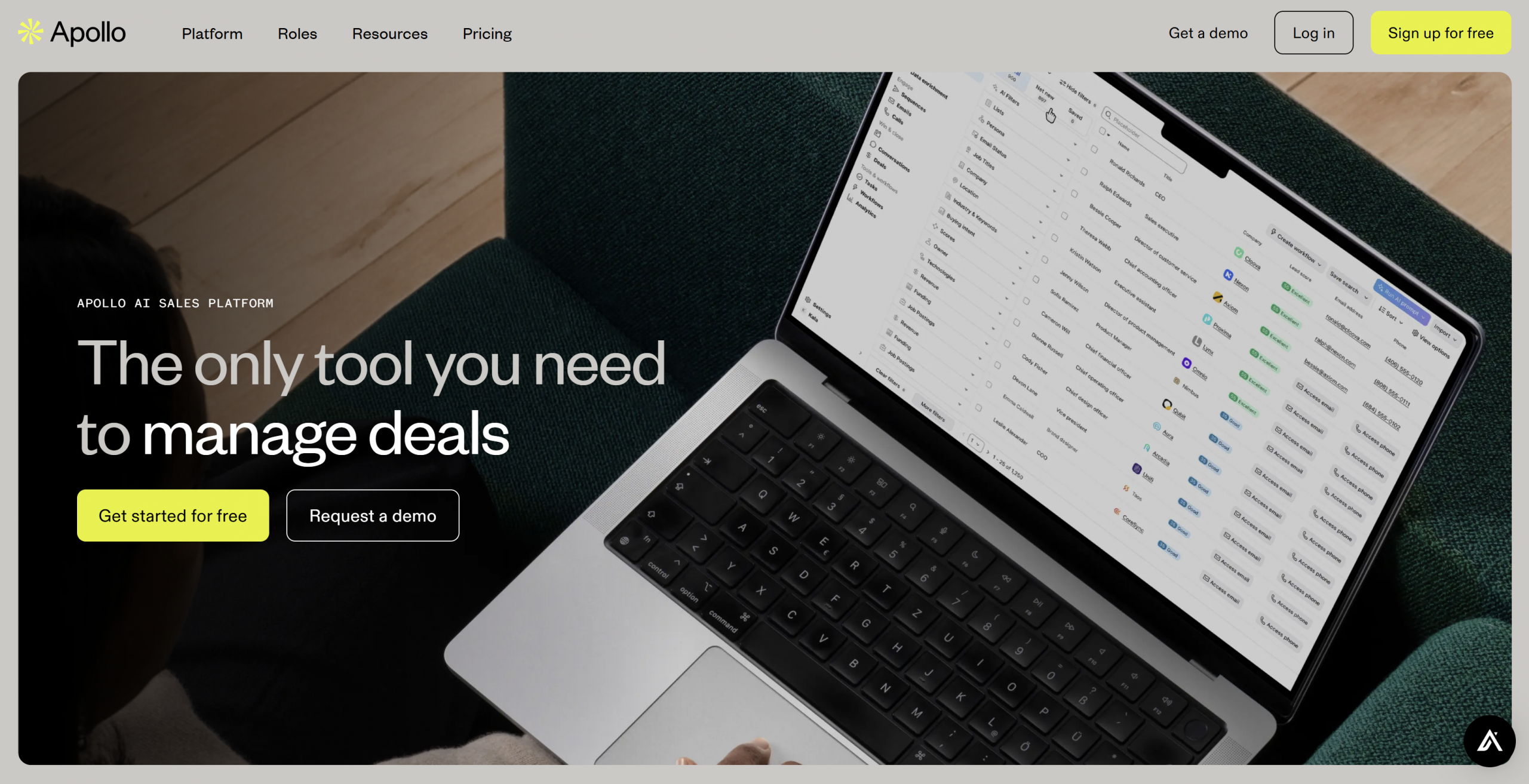
Best for
- Filtering companies by industry, revenue, or job title.
- Syncing data with CRM systems to keep contact info updated.
- Exporting email addresses, phone numbers, and other details for outreach.
- Conducting market research with granular search options.
- Automatically tracking and managing your outreach efforts.
G2 review: 4.8/5
Good for a start but needs utilities
I liked the Chrome extension feature for its ability to find companies and contacts when browsing LinkedIn and company websites. It saves a lot of time.
But, credits should only be consumed when full information about the person is actually available. Sometimes it can give false information.
Also, outgoing mails usually appear as spam and my mail address is changed to a random one.
Ömer D., Sales Development Specialist, Mid-Market Company
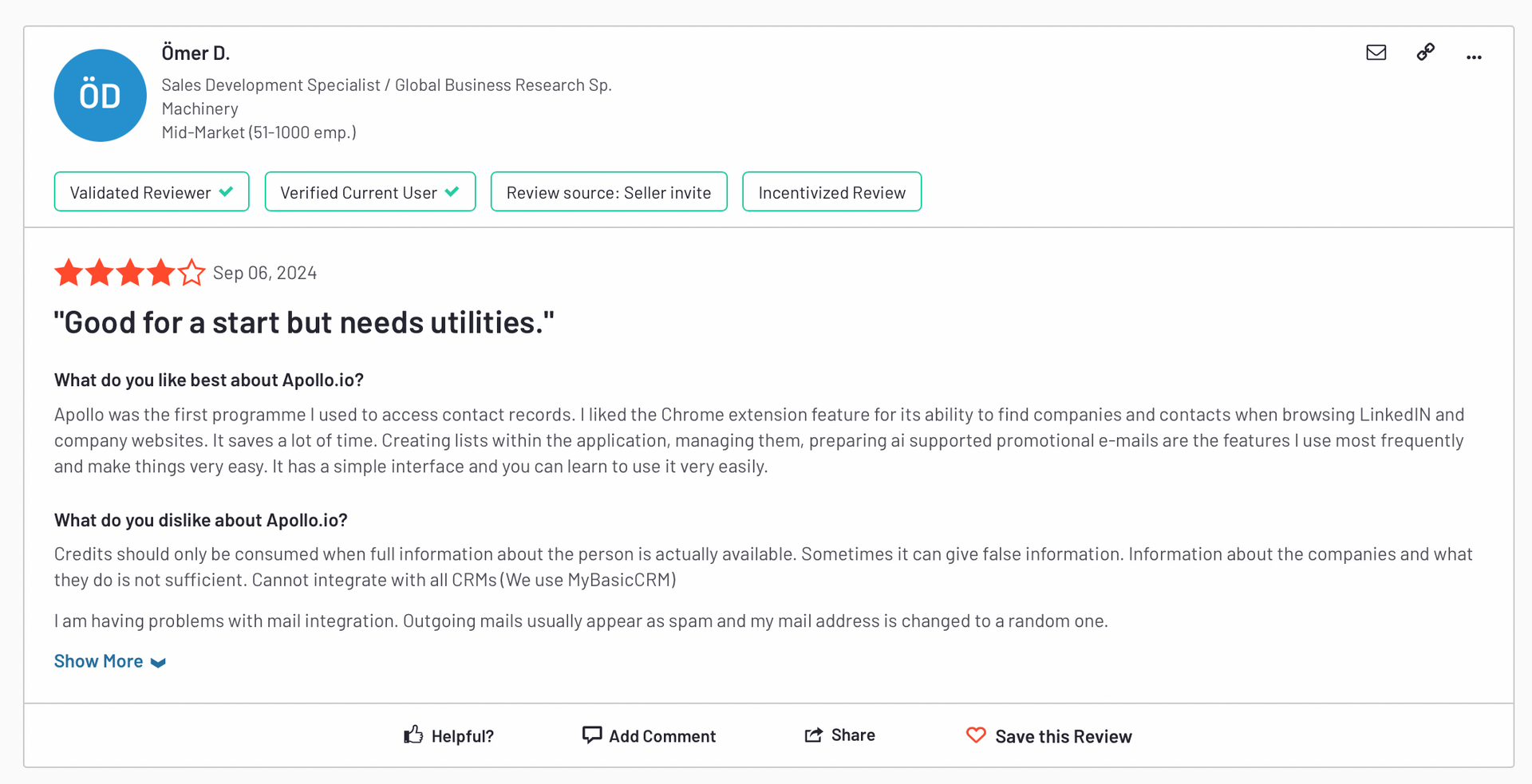
Pricing
Apollo.io offers a free plan, with paid plans starting at $59 per user/month for 10,000 email credits and HubSpot integration.
Lusha
Lusha is a B2B lead generation tool that helps you find accurate contact information, such as phone numbers and emails, to engage the right prospects.
It works well for companies looking to enhance their outreach efforts by using enriched data from LinkedIn and other sources, all while staying compliant with GDPR and CCPA regulations.
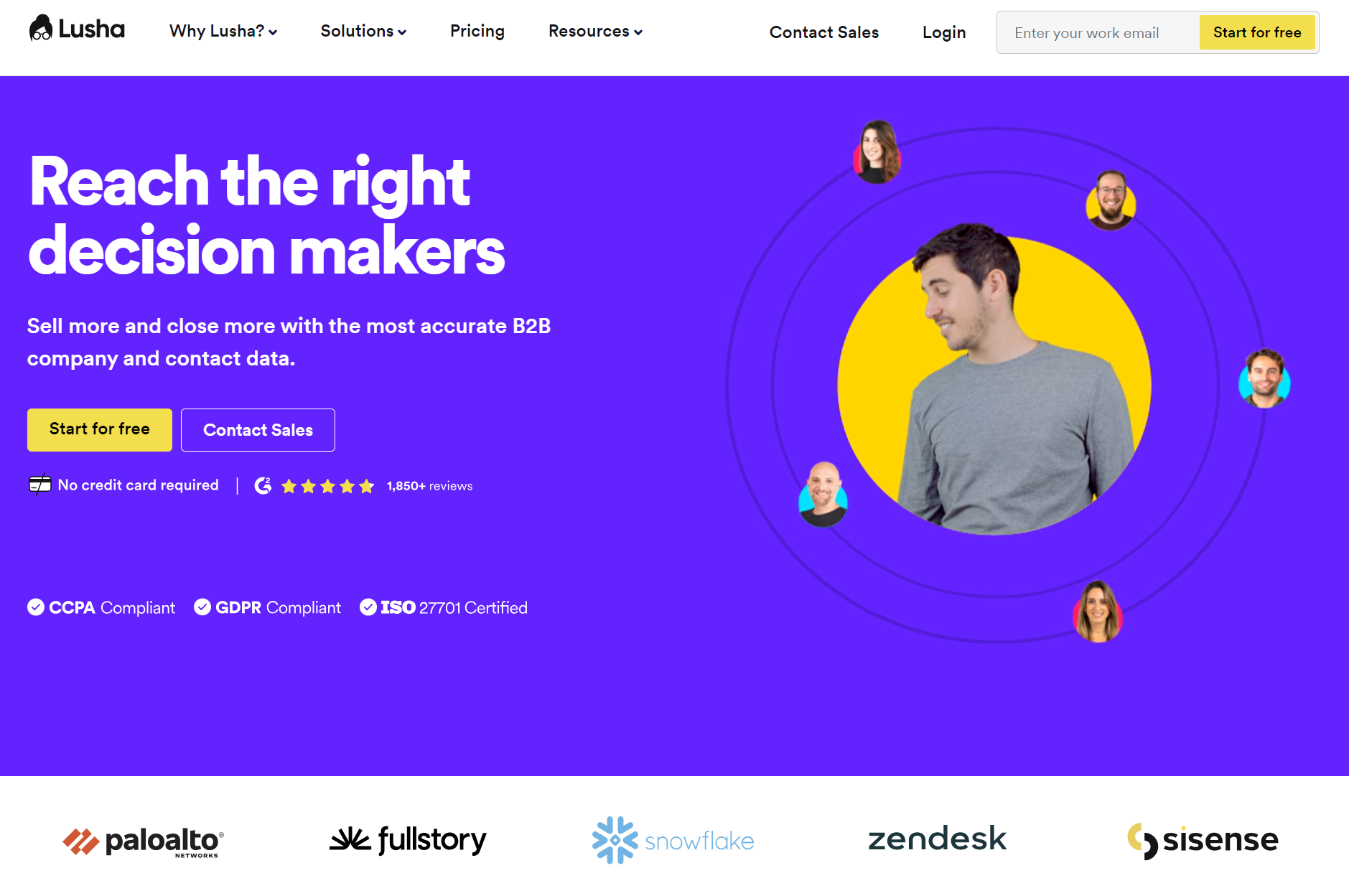
Best for
- Finding accurate phone numbers and emails for B2B contacts.
- Enriching contact data in bulk or individually.
- Syncing with CRMs like HubSpot and Salesforce.
- Building targeted prospect lists from LinkedIn data.
- Compliant data collection with GDPR and CCPA regulations.
- Quick setup and easy-to-use Chrome extension.
G2 review: 4.3/5
Good data
Lusha offers good insight into correct emails and phone numbers for prospects. Additionally, Lusha integrates well with our CRM and makes prospecting/importing contacts seamless.
But, not always having the right information is a big drawback. Another is it will sometimes pull incorrect information from LinkedIn (especially if someone has their PHD or MD next to their name).
Rachel R., Strategic Accounts, Mid-Market Company
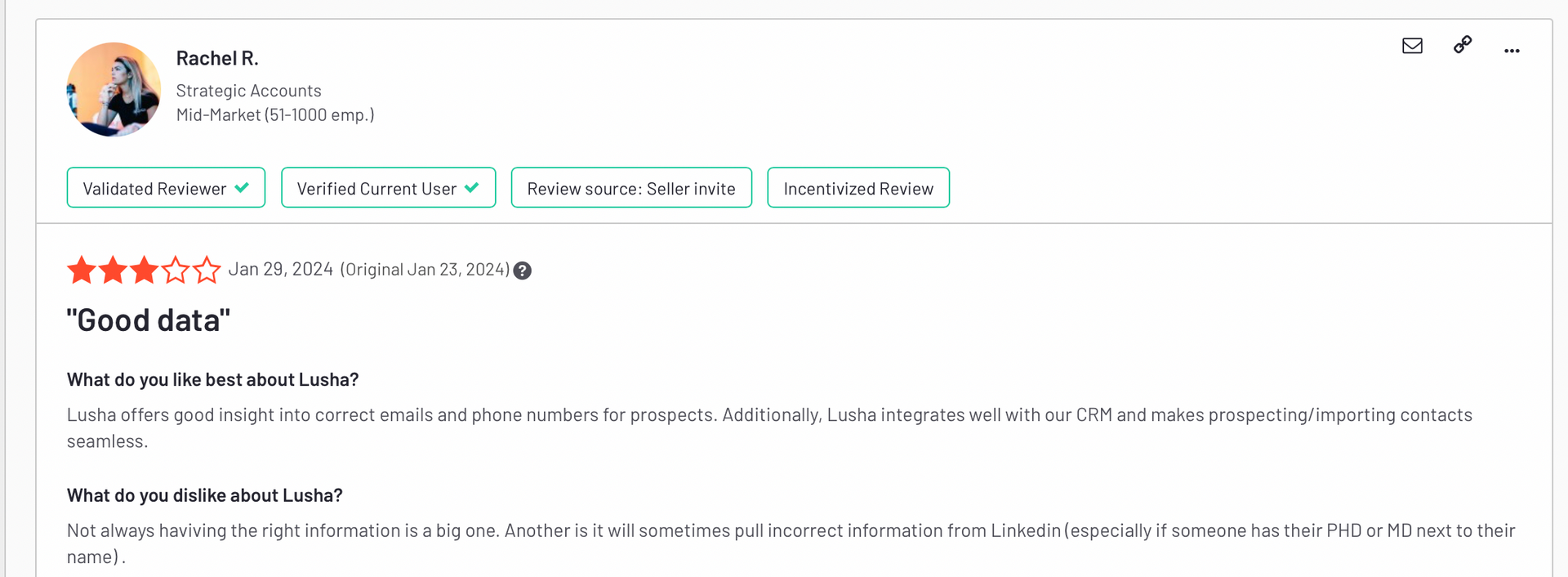
Pricing
Lusha’s price starts at $36 per user per month, which gives you access to 480 phones and a bulk show of up to 25 contacts.
Snov.io
Snov.io is an all-in-one B2B lead generation and email outreach platform, perfect for teams focused on finding and verifying emails at scale.
It offers an email finder, email tracking, and automation tools to help generate and nurture leads.
With Snov.io, you can run drip campaigns, track engagement, and easily capture data from websites or LinkedIn.
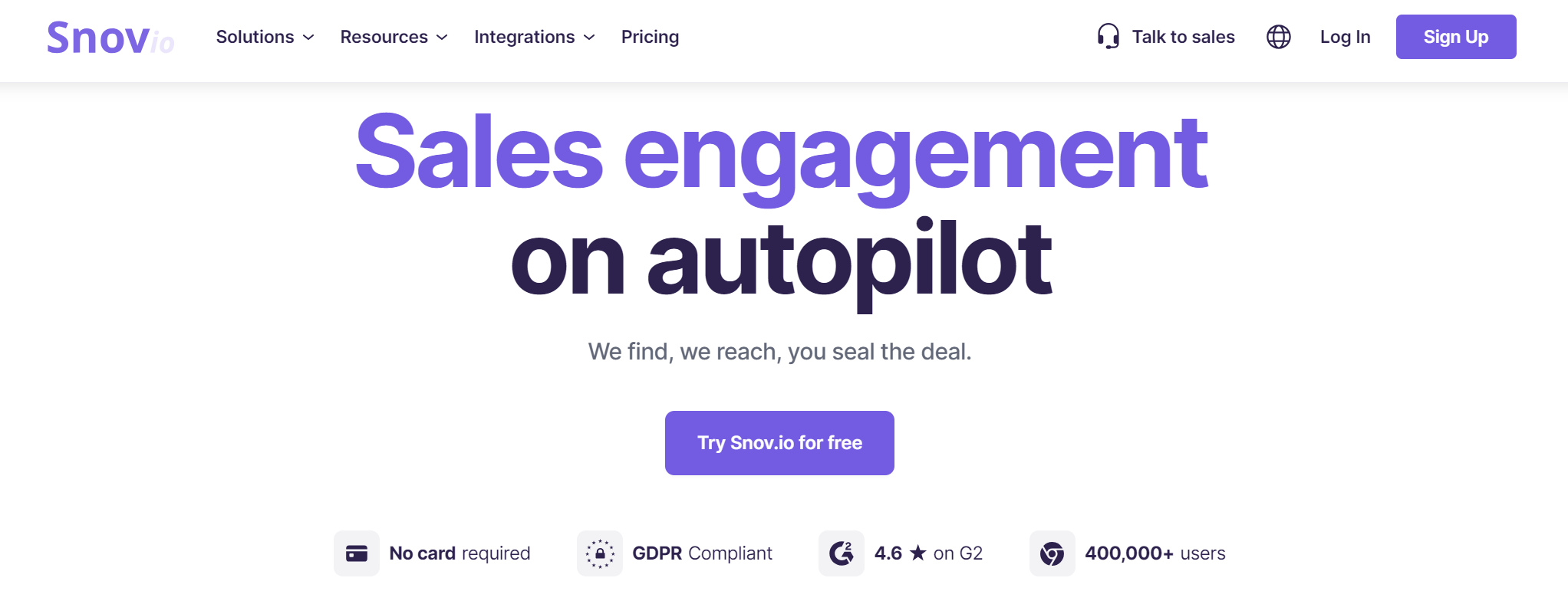
Best for
- Finding and verifying bulk emails.
- Automating email sequences.
- Organizing and segmenting lead lists.
- Integrating with CRM systems for streamlined workflows.
G2 review: 4.6/5
Great tool for email outreach, amazing customer support
Ease of use, user-friendly interface and navigation, great deliverability check process, great customer support team.
But, somewhat weak database, lack of integrations with 3rd parties.
Denis F., Small-Business Company
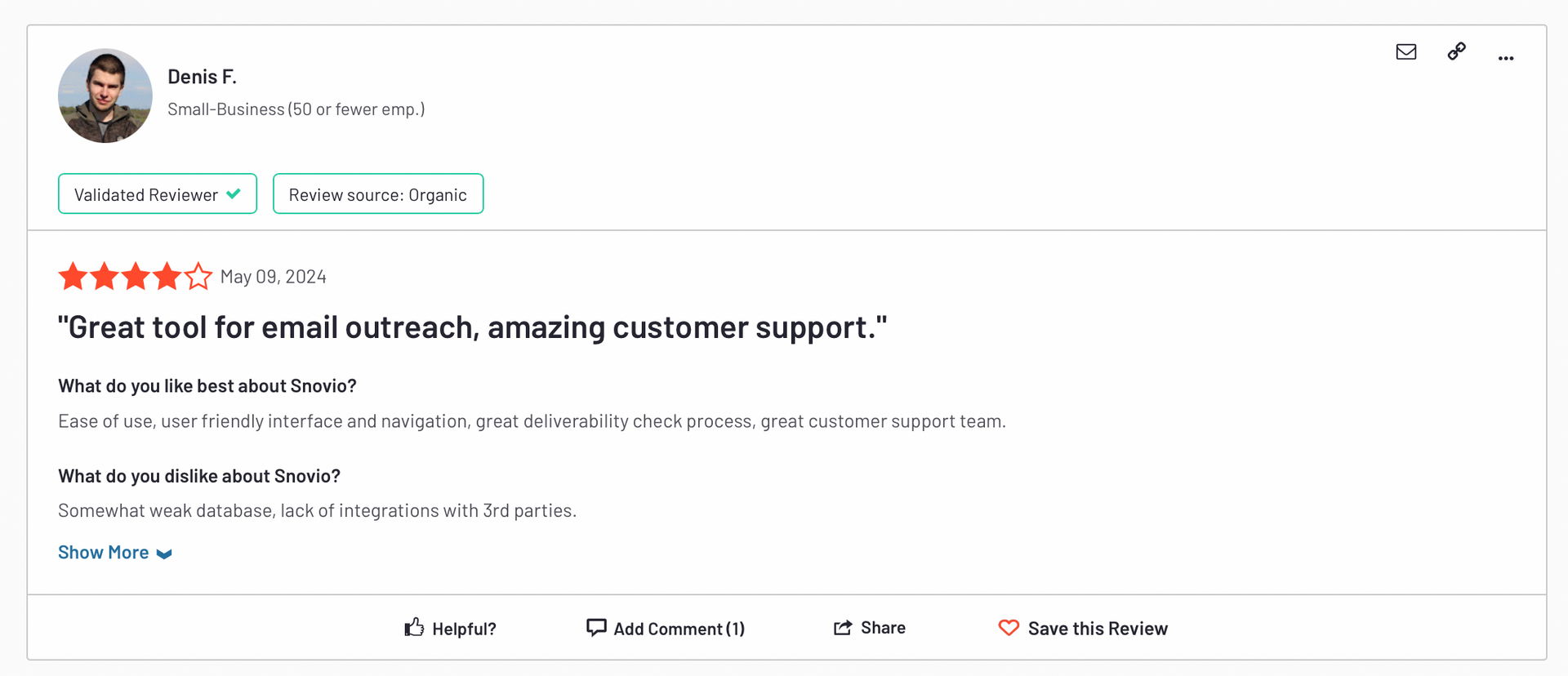
Pricing
Snov.io pricing starts at $39 per month with 1,000 credits and 5,000 email recipients.
ZoomInfo
ZoomInfo is a powerful B2B lead generation platform providing access to millions of company profiles and contacts.
It helps businesses enhance their outreach with precise data and insights.
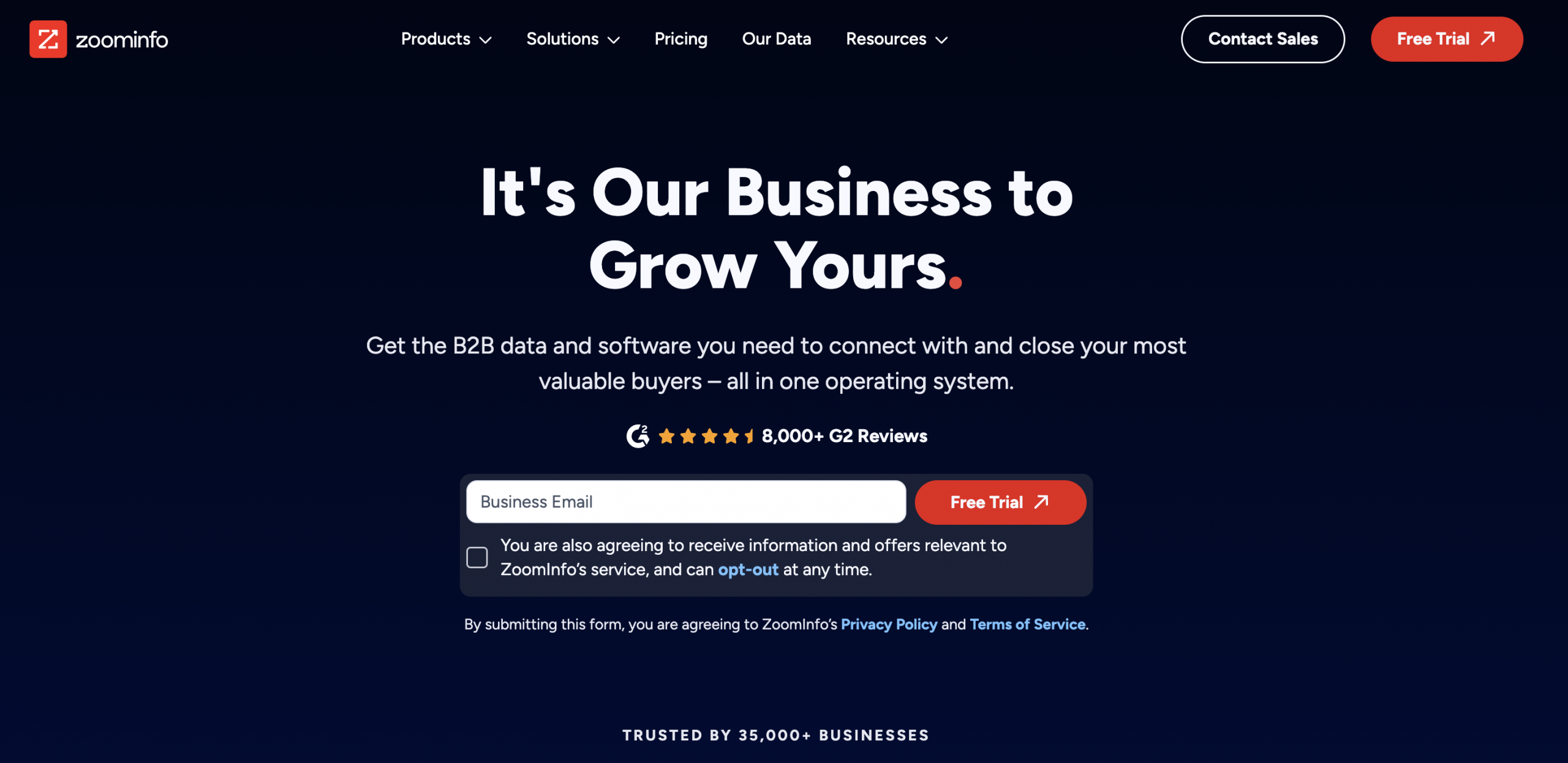
Best for
- Comprehensive lead generation with in-depth market intelligence.
- Sales teams looking to understand buying signals and intent data.
- CRM integration for seamless workflow and data sync.
- Advanced filtering for precise targeting.
- Analytics to measure campaign performance and track prospects.
- Large enterprises needing robust, scalable solutions.
G2 review: 4.4/5
Tons of important info, but slow
The most helpful thing about Zoominfo is the information on prospects it provides. I really like how you can find out where every location of a company is, the phone numbers and emails of prospects, etc.
Something I dislike the most is sometimes ZoomInfo can run really slowly. I feel like it takes more time out of my day to do prospecting sometimes because of how slow it is responding.
Jake B., Business Leads Development Representative, Mid-Market Company
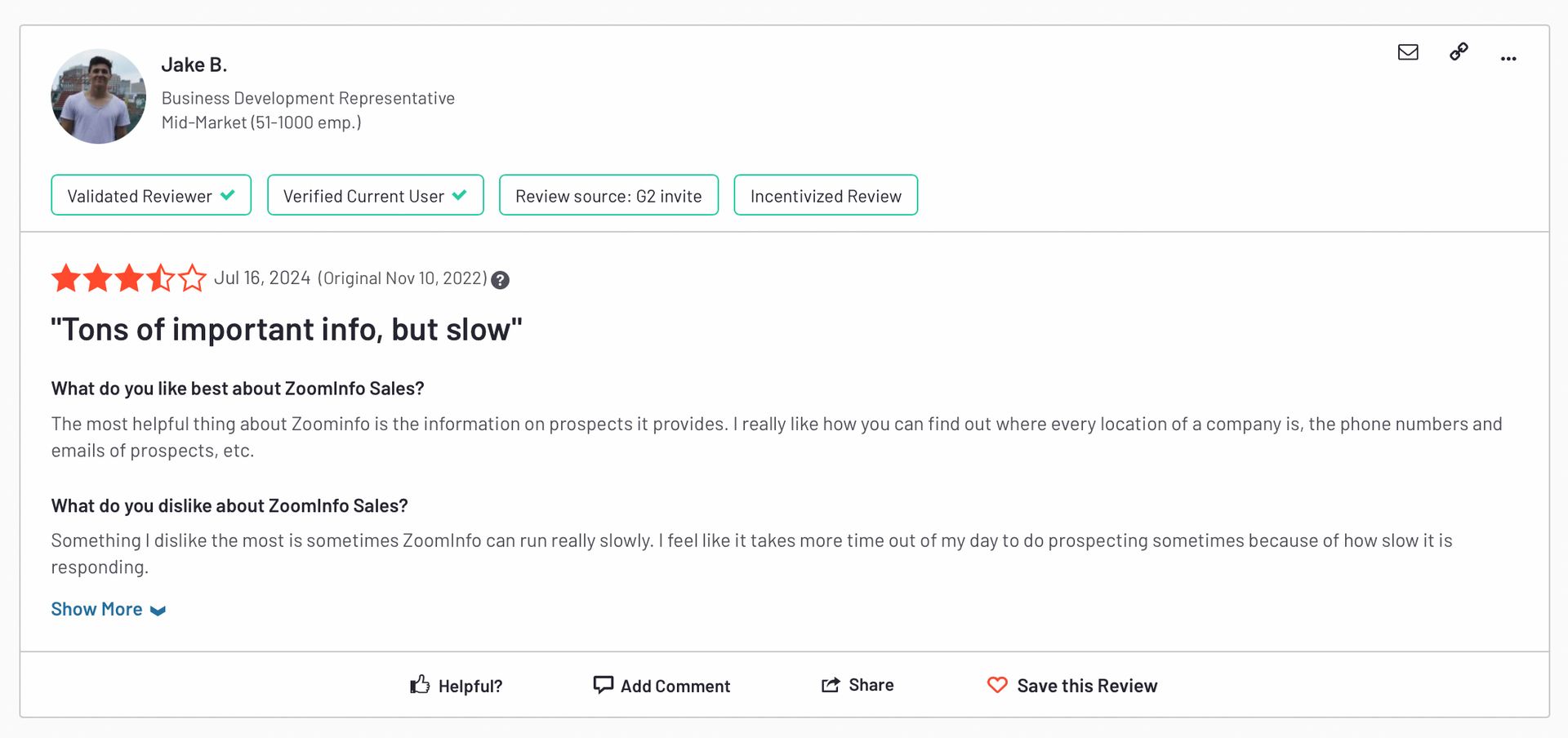
Pricing
ZoomInfo’s pricing starts at $14,995 per year. Contact their sales team for tailored solutions and a quote specific to your needs.
Cognism
Cognism provides GDPR and CCPA-compliant B2B lead generation, focusing on delivering accurate contact data, especially for businesses targeting European markets.
It’s ideal for companies needing compliant intent data to streamline outreach.
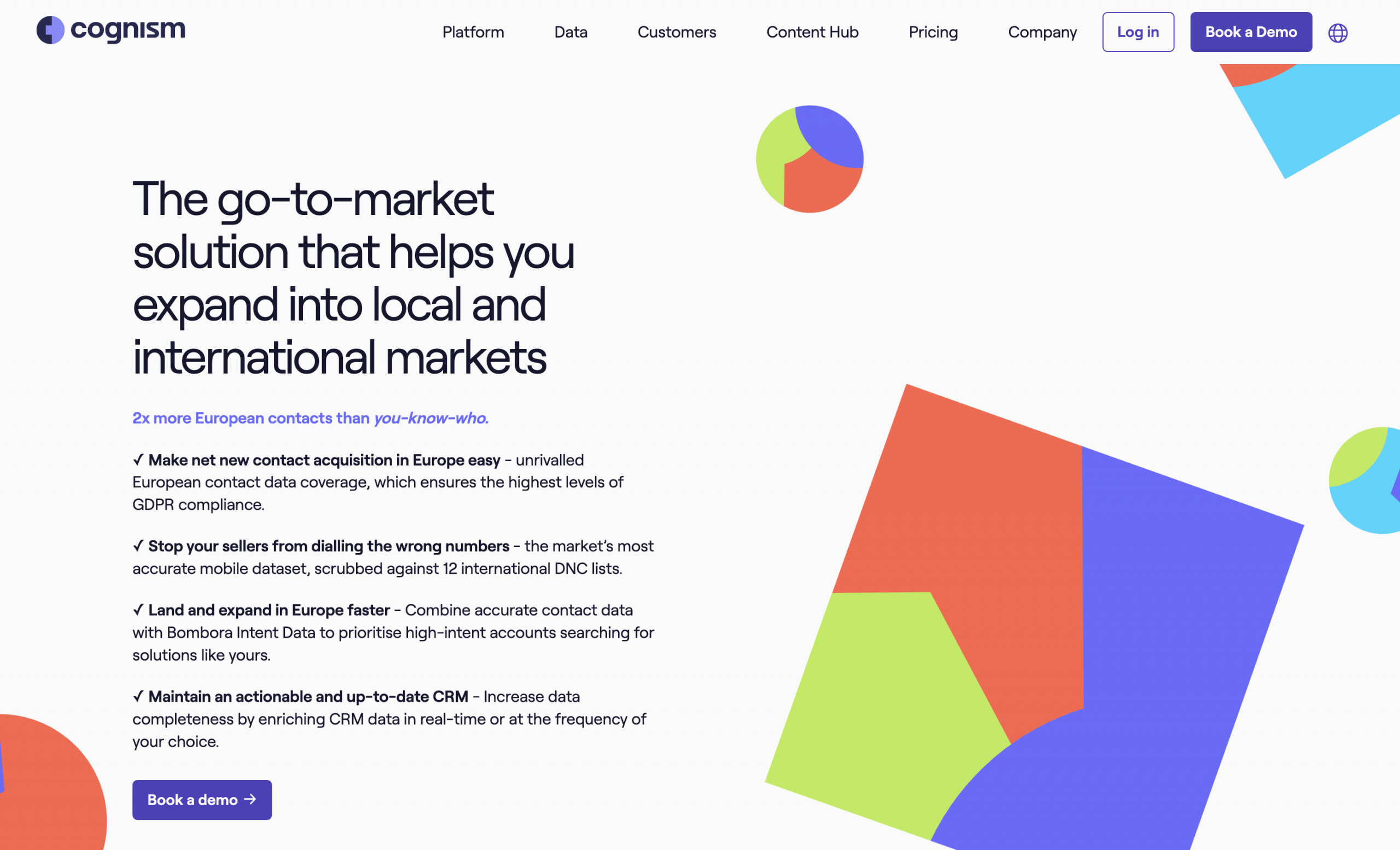
Best for
- CGDPR and CCPA-compliant data solutions.
- European and international lead generation.
- Intent data integration (powered by Bombora).
- Global sales teams.
G2 review: 4.6/5
A huge streamline to prospecting
I like the simplifying of steps across various aspects of the prospecting process. It no longer is a hunt to organize and clean up your CRM after an import or export.
I’ve been noticing a few more wrong numbers lately, but overall the accuracy and amount are still more substantial than previous tools I have used.
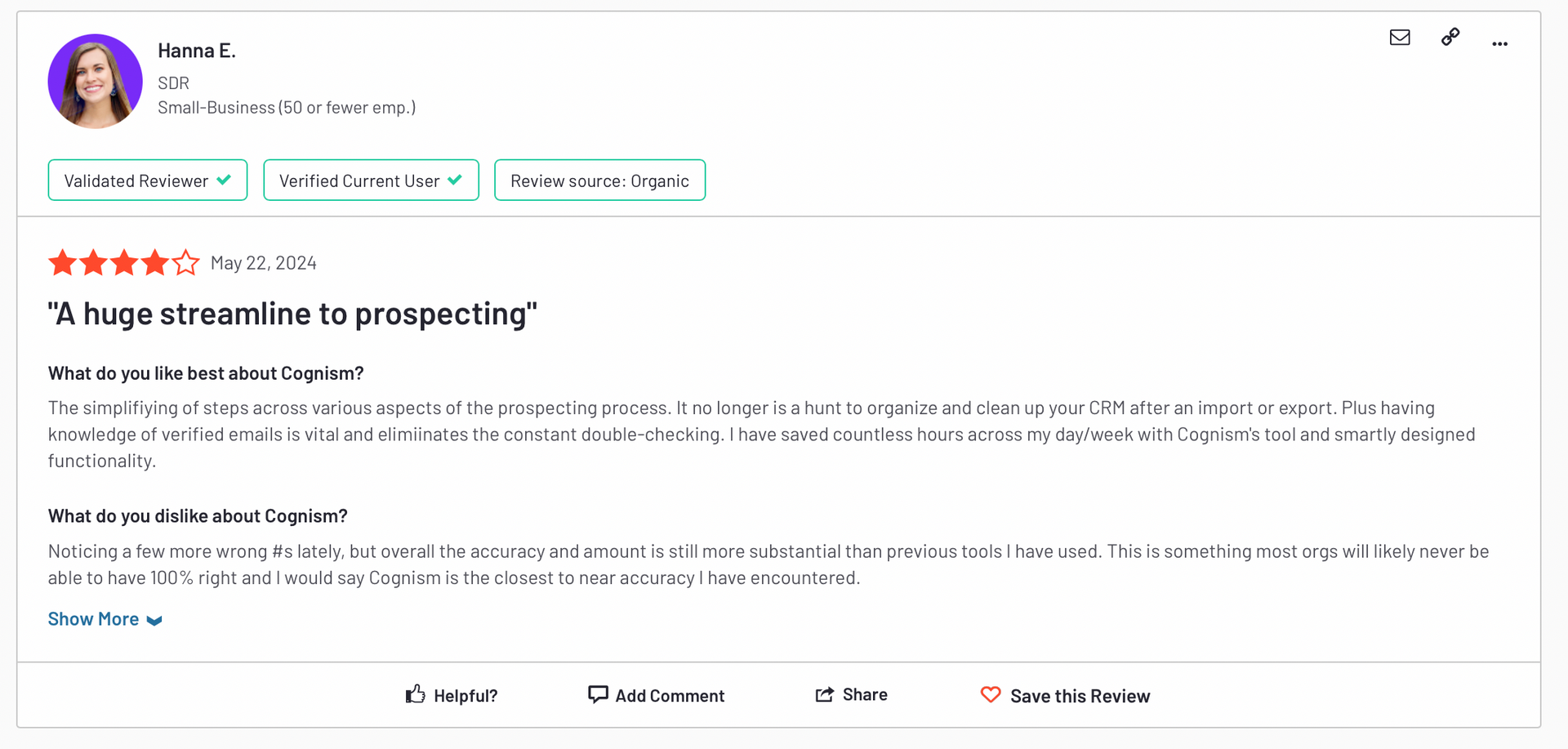
Pricing
Cognism’s pricing ranges from $15,100 to $103,000 annually based on plan features. You need to contact them for more specific quotes.
Conclusion
That’s it for our guide on B2B lead generation best practices for 2024. These strategies help you attract more qualified leads, build stronger relationships, and scale efficiently.
With tools like PhantomBuster, you can automate key tasks to focus more on converting leads into loyal customers.
Ready to start generating leads faster? Try PhantomBuster with a 14-day free-trial today!
